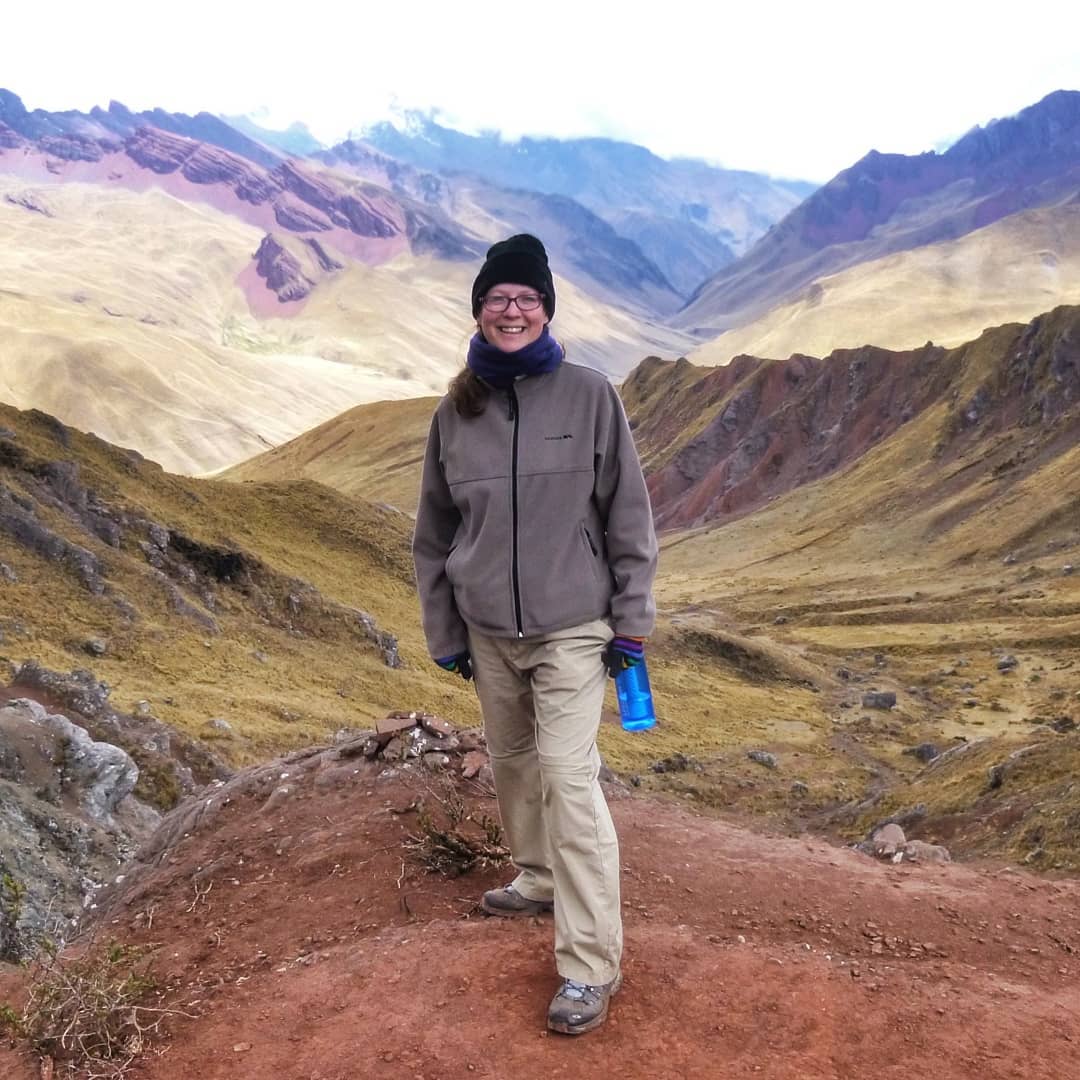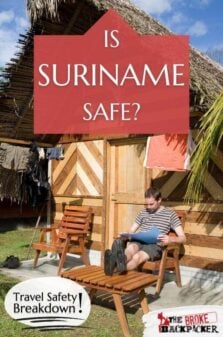For a lot of people, Suriname is a bit of a mystery. The smallest sovereign nation in South America, this former Dutch colony borders the continent’s largest country, Brazil, and an Atlantic coastline – but what is it all about?
After its independence in 1975, Suriname still has strong roots with the Netherlands, with Dutch as its official language. Boasting a Caribbean culture, it is also one of the world’s most ethnically diverse countries.
Add to that stunning nature, year-round tropical climate and a whole lot of history, and Suriname – while not your classic vacation spot – is a fascinating place to visit. However, is this little slice of paradise safe?
There are certain things to watch out for, such as nature that can be dangerous. This epic guide to staying safe in Suriname is packed to the brim with all the tips and information you’ll need on a trip to this intriguing nation.

Unlock Our GREATEST Travel Secrets!
Sign up for our newsletter and get the best travel tips delivered right to your inbox.
- How Safe is Suriname? (Our take)
- Is Suriname safe? (The facts.)
- Is it Safe to Visit Suriname Right Now?
- Suriname Travel Insurance
- 16 Top Safety Tips for Traveling to Suriname
- Keeping your money safe in Suriname
- Is Suriname safe to travel alone?
- Is Suriname safe for solo female travellers?
- Is Suriname safe to travel for families?
- Is Suriname safe to travel with young children?
- Is it safe to drive in Suriname?
- Is Uber safe in Suriname?
- Are taxis safe in Suriname?
- Is public transportation in Suriname safe?
- Is the food in Suriname safe?
- Can you drink the water in Suriname?
- Is Suriname safe to live?
- How is healthcare in Suriname?
- FAQ about Staying Safe in Suriname
- Final thoughts on the safety of Suriname
How Safe is Suriname? (Our take)
Suriname is a multi-ethnic, multilingual country with pretty friendly people to meet and give you a warm welcome. It’s a place where mosques, Hindu temples and synagogues share the same streets.
Its capital city, Paramaribo (locals call it “Parbo”) has a stunning UNESCO-recognised historic core of Dutch colonial buildings, barely changed since the 17th century! It’s a surprising place to explore for sure.
However, there are some places – especially in the capital – where your personal safety will be more at risk than in other parts of the country.
Petty crime is an issue, with pickpocketing being a particular problem in urban areas and marketplaces. This kind of crime actually happens to be on the increase, too.
Travelling to the rainforested interior of the country, although more and more of a popular option nowadays, comes with its own risks. Without the crime rates of urban areas, the nature and remoteness of the interior provide more than enough risk to cause concern.
Any trip to the interior should be planned in advance, and travelling independently isn’t always advised (though it is generally trouble-free).
With that in mind, let’s move on to the statistics to get a better idea of what we’re dealing with in Suriname.
There is no such thing as a perfect safety guide, and this article is no different. The question of “Is Suriname Safe?” will ALWAYS have a different answer depending on the parties involved. But this article is written for savvy travellers from the perspective of savvy travellers.
The information present in this safety guide was accurate at the time of writing, however, the world is a changeable place, now more than ever. Between the pandemic, ever-worsening cultural division, and a click-hungry media, it can be hard to maintain what is truth and what is sensationalism.
Here, you will find safety knowledge and advice for travelling Suriname. It won’t be down to the wire cutting edge info on the most current events, but it is layered in the expertise of veteran travellers. If you use our guide, do your own research, and practise common sense, you will have a safe trip to Suriname.
If you see any outdated information in this guide, we would really appreciate it if you could reach out in the comments below. We strive to provide the most relevant travel information on the web and always appreciate input from our readers (nicely, please!). Otherwise, thanks for your ear and stay safe!
It’s a wild world out there. But it’s pretty damn special too. 🙂
Is Suriname safe? (The facts.)
With its huge rainforests, interesting history and multicultural makeup, increasingly more intrepid travellers are making their way to Suriname.
In fact, in 2017 the country recorded a total of 278,000 tourists. Not many, you may think, but it’s an increase on the previous year’s figure of 257,000, with an annual increase of around 13%.
Plus, for the size of the country, that works out as 0.48 tourists per resident (approximate population: 575,990), generating an impressive US$73 million from the visitors.
Each year tourism in Suriname is growing. The World Travel & Tourism Council (WTTC) has forecast that by 2025, Suriname will be receiving 357,000 tourists yearly.
Tourism however only accounts for about 5,000 jobs right now and makes up just 3% of the GDP, both of which are expected to grow over time.
In short: It’s a hidden gem waiting to be discovered.
There are issues, however.
Suriname is a well-used transit zone for South American cocaine on its way to Europe. The interior of the country has a lack of law, which allows this to occur.
According to WHO, in 2017, Dengue fever in Suriname accounted for 0.23% of deaths in the country. It might not seem much, but proportionally this makes Suriname number five in the world with regards to Dengue fever deaths globally.
Violence is also an issue, with violent deaths accounting for 10.75 per 100,000 of the population (2017). Road safety is lacking, too, with 19.4 deaths per 100,000 recorded in the same year.
Crime and corruption in Suriname continue to be fairly commonplace. Exercising caution during your trip is a must to have a safe trip in Suriname.
Is it Safe to Visit Suriname Right Now?
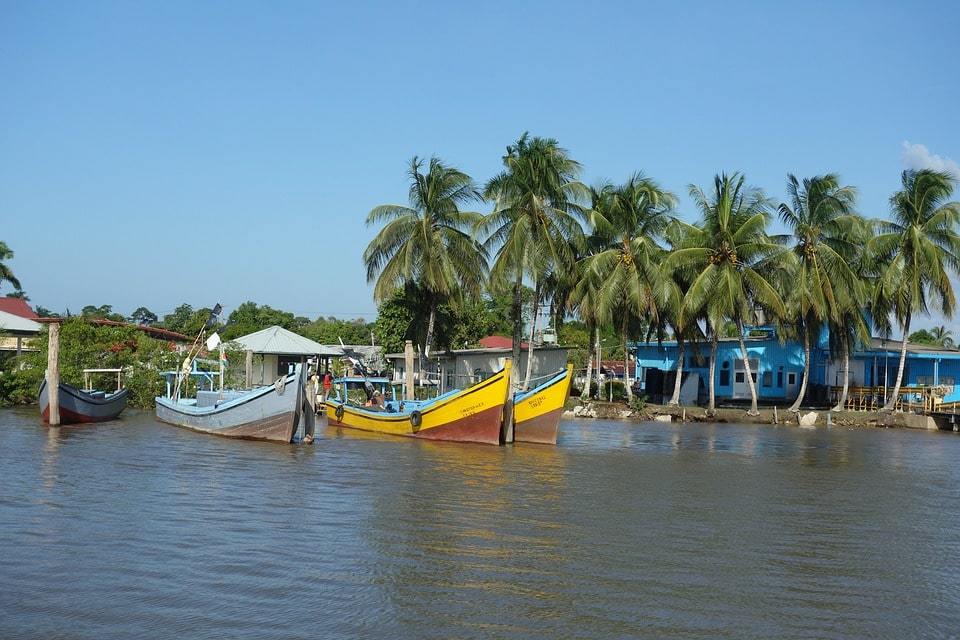
Though issues relating to political protests, violence, petty crime and governmental corruption persist, there’s nothing overbearingly obvious that should stop your trip to Suriname.
If you have backpacked in South America, then you will be used to the sorts of potential dangers that are common in such places.
Paramaribo is the place to watch out for common crimes, like pickpocketing, especially in and around business districts and shopping areas. Car theft, and carjackings, have also been reported.
Walking around the capital after dark is definitely not advised.
Other urban areas can also have a slight vibe of lawlessness after dark. It is best to do your research into what particular area of the country you are visiting, regarding what particular safety precautions you should take.
Travel to the interior of Suriname is currently something that can be done, but it must be planned in advance and is best done with a guide and/or on a tour. You’ll be able to get a much more in-depth insight into the country through a guide, too.
Light aircraft connect many of Suriname’s destinations, and it is important to be aware of the risks that come with using these – especially in bad weather. An investigation into which companies have a better track record is a good idea.
One thing to note is an ongoing border dispute between Suriname and Guyana. Not likely to cause you trouble, but though “settled” by the UN in 2007, Suriname still claims an area of land. There is also another border dispute with French Guiana.
That said, remember that borders can be sensitive areas. Take care to cross only at official crossings. Changes to the situation are unlikely, but it is important to keep up to date with current events.
ALWAYS sort out your backpacker insurance before your trip. There’s plenty to choose from in that department, but a good place to start is Safety Wing.
They offer month-to-month payments, no lock-in contracts, and require absolutely no itineraries: that’s the exact kind of insurance long-term travellers and digital nomads need.
SafetyWing is cheap, easy, and admin-free: just sign up lickety-split so you can get back to it!
Click the button below to learn more about SafetyWing’s setup or read our insider review for the full tasty scoop.
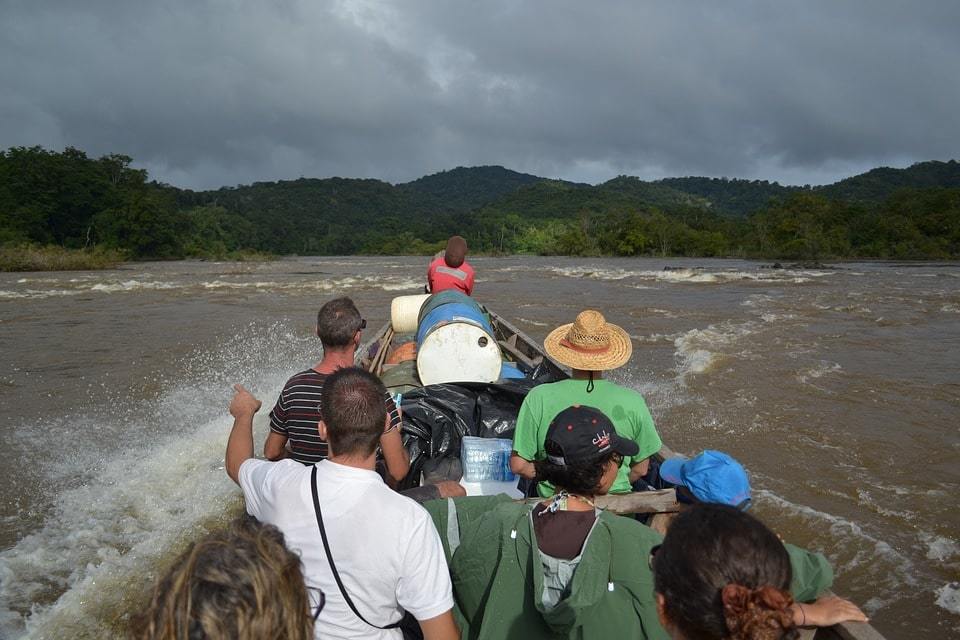
Suriname is a rich and diverse country that is well worth your time and money. There is no end to the beautiful nature that can be explored, the charisma of the people and the contrasting chaos of the capital. It’s a treasure trove of a country to enjoy and a great place for an adventure. If that sounds good to you, here are some of our top safety tips for Suriname when you decide to get going.
- Take care in busy shopping districts – Most petty crime occurs in these areas, so be vigilant.
- Avoid wearing flashy clothes – That goes for jewellery and SLRs, too. Anything designer or expensive will make you a target for petty criminals.
- Stay away from secluded areas after dark – Certain areas in the capital city, such as Watermolestraat and Parmentuin, are known to be sketchy. You should always research the area in which you are staying.
- Store important documents in a secure place – Walk around with copies (e.g. take a picture on your phone) rather than the real thing.
- Stay away from drugs – Possession and trafficking in relation to any kind of drugs in Suriname can lead to lengthy prison sentences.
- Cover up against mosquitoes – Dengue fever, yellow fever, malaria and schistosomiasis are all prevalent, so cover up at dawn/dusk, use repellent with DEET and take care especially outside of urban areas.
- Respect the heat – Suriname can be super hot and humid, so stay limit your time in the sun and stay hydrated!
- Be prepared for the interior – Suriname’s rainforested interior is hot, humid and isolated, so ensure that you pack appropriately.
- Go with a guide – The interior is not just remote, but a haven for drug traffickers. You will have no idea what you’re doing alone, so a seasoned guide is a must.
- Be respectful and responsible – This goes for anywhere, but in the interior, you should be respectful of the various communities and religious beliefs. Snapping a photo of a holy site may not be ok, so always check beforehand.
- Make sure you have enough cash – Credit cards are not widely accepted. Not even all hotels will accept them for payment. Don’t be left without enough money to pay for food and accommodation. Wear a money belt to carry your money around safely.
- Be careful when taking money out at ATMs – Do not use street ATMs. Visit banks in business hours and withdraw money inside. Note that not all ATMs will take an international card (you may need to try a few).
- Consider taking US dollars to exchange – This is a good back-up if you can’t get enough cash-out.
- Steer clear of political protests – It’s not a smart move to get mixed up in case something gets out of hand.
- Be very careful with taxis – Try to get a licensed cab where possible. Check out our detailed section on taxis in Suriname later on!
- Learn some lingo – English is widely spoken and understood, but some Dutch will go a long way – and be appreciated by the locals!
Keeping your money safe in Suriname
A lot of places in the world are still fairly cash-based, and that is the case in Suriname, too. With that in mind, making sure you have enough cash is a priority – and so is protecting that cash.
Simply put, the best way to keep your money safe in Suriname (or anywhere) is by using a money belt.
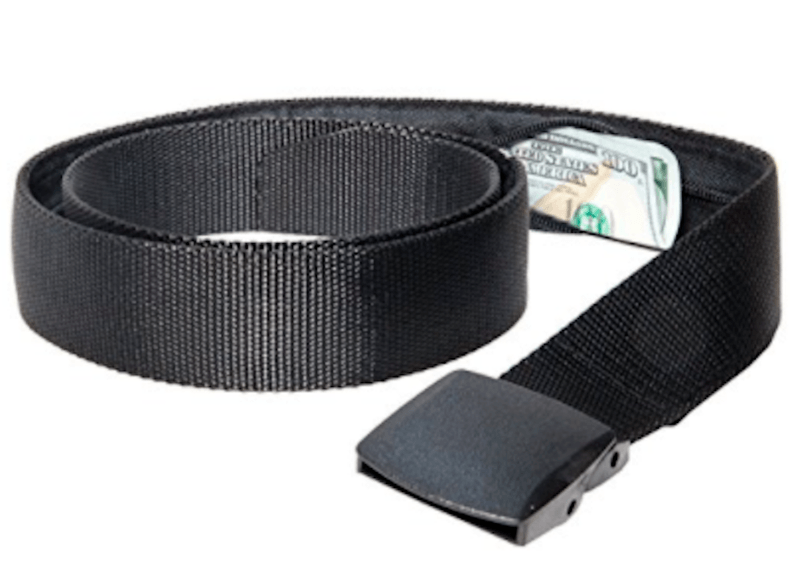
A money belt is an easy way to keep your money safe. How can a pickpocket pick your pocket when there’s nothing actually in your pocket, to begin with? It stops the problem at its source.
However, not all money belts are created equal – some are better than others and, for us at least, many of them tend to be overcomplicated, uncomfortable and look frankly quite obvious when worn under clothing.
The Pacsafe Money Belt is our best bet. It’s affordable, it looks and acts like a belt, and it’s sturdy – what more could you ask for out of a money belt!
Simply stick your money in the hidden zipper pocket and you’ll have instant peace of mind as you head out to explore the sights of Paramaribo.

Suriname is a friendly country to travel around, but it’s not always easy – especially as a solo traveller.
Though people are nice and welcoming, there’s a significant lack in infrastructure and it can be quite hardworking out how to get from A to B. It can be more than just a bit challenging, but it can be done!
Here are some tips to help you get to grips with Suriname and enjoy the best of what it has to offer safely.
- Don’t walk around in deserted areas after dark, especially after dusk in urban areas. The atmosphere changes quickly, and it is possible to find yourself in a not so nice situation.
- You should not be too alarmed by all of the warnings and cautions that people will give you. More often than not, the locals are just looking out for you. In essence, there seem to be more people concerned for the well-being of visitors than there are people looking to exploit visitors.
- Make sure you book yourself into a good hostel or guesthouse in advance. You don’t want to find yourself in a remote area of a city with trying to find where you are staying. It’s not the sort of country where you can spend hours traipsing around looking for a cheap dorm.
- If it would make you feel more safe and comfortable, then don’t skimp out on accommodation and opt for a secure 3-star hotel instead of a hostel.
- You should definitely join a well-reputed company for a tour of the interior of Suriname. You should always do your research on tour companies and only book with a company that has a lot of good reviews.
- It can be frustrating for an independent solo traveller as tours often need a certain amount of people in order to go ahead. In that case, make sure to book tours well in advance. Even then, it may not be confirmed until the right amount of people have booked onto the tour.
- There is nightlife if you want to enjoy it! (And especially in the capital over the weekend.) This can be a fun way to get to grips with the local culture after dark, but always pair up with somebody before you go, or take a local guide. Going alone will put you more at risk of being a target.
- Speaking of which, try not to stand out too much with how you dress. Standing out may attract unwanted attention and make you look more like a tourist. Dressing down is usually better.
- Ask at your accommodation for their advice on local knowledge. Being locals themselves, they will know the best places to go for food, drinks and some things to see around the area in which you are staying, too.
- Tell people about your travel plans. Going off-grid somewhere like Suriname can be dangerous. Always keep in touch with people back home, checking in regularly to tell them where you are going next and what you’re doing.
If you are a solo traveller looking for a new place to go, Suriname may just be your next favourite off the beaten track destination.
There is a whole lot of interesting stuff to discover here, from the multicultural population to the history and the crazy wildlife going on in the interior.
Hiring a guide is a great idea, as is joining a group tour. A guide will offer more insight, which is exactly what you’ll want in such a fascinating place as Suriname. Just remember to do your research and keep your wits about you!
Is Suriname safe for solo female travellers?
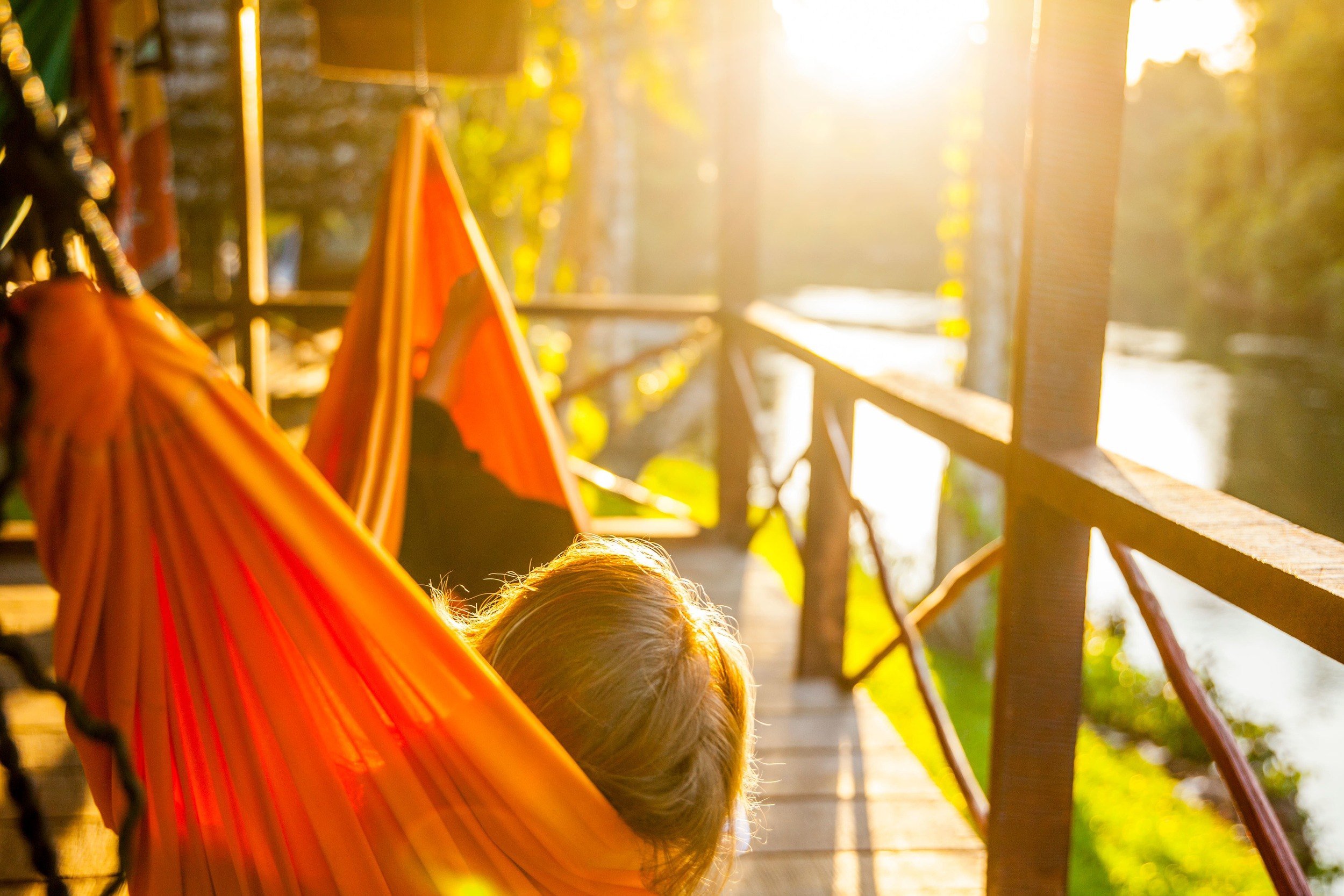
Independent travel is not a huge thing in Suriname – even less so for solo female travel.
Though you will have to do a lot of organisation before you go, it is still doable as a woman travelling by yourself. You may come up against some challenges and bumps in the road along the way, but there’s no real reason why it can’t be done.
In order to help you stay safe and plan the most awesome trip, we’ve specially curated some tips for solo female travellers in Suriname.
- Research your accommodation thoroughly and have it all planned in advance. Trust us, you don’t want to be arriving off a long bus journey only to be wandering around by yourself in an unknown area looking for somewhere to stay. Plan ahead, choose female-friendly accommodation and don’t be afraid to pay more for somewhere that’s extra secure.
- Don’t travel at night time at all. Make sure that you arrive at new destinations with plenty of time to get to your accommodation. Night travel can be risky and after dark, the atmosphere in urban areas changes.
- Make sure you keep your valuables close to you. A handbag that is swinging off your shoulder, or roadside, is going to be a target for opportunist thieves.
- Likewise, a smartphone can be a lifeline, since it’s got maps on it and enables you to keep in touch with folks back home, but it is worth a lot of money and makes for an easy thing to swipe if you’ve got it out in a busy area.
- Don’t tell strangers information about yourself, including where you are staying, your hotel room, or any other detailed travel plans. You are under no obligation to tell anyone anything, and doing so could put you at risk.
- Join a tour. This is the best and safest way to see much of the country. Using a tour company ensures that you get to see the sights safely, in a group of people you can get to know, and with a guide who will give you a deeper insight into how Suriname ticks.
- Let your family and friends back home know your itinerary. Share any updates with them, like if you’ve changed your mind and won’t be going to the interior for example. Not only will it be good to keep you grounded as you travel, but it will put your loved ones at ease knowing you’re safe.
- Keep your dress code low-key. Try to cover up a bit more than you would normally, erring on the side of modesty, and avoid drawing attention to yourself, as this can lead to uncomfortable situations.
- Don’t get crazy drunk. Always make sure that you can safely return to your accommodation after a night out. It is probably best not to head out for a night on the town by yourself – always go with people from your hotel or hostel.
- Think about joining online communities to make a network of friends. Girls Love Travel may offer you the chance to meet fellow travellers as they make their way through Suriname, while Host A Sister enables you to meet local people looking to make friends with visitors to their country.
Suriname isn’t always going to be the easiest country to travel as a solo female, but the rewards are genuinely amazing. People are super helpful, very friendly, and the nature and interesting makeup of the country will be an eye-opening experience.
Remember that Suriname is a lesser-visited country, and there will be some frustrations during your trip – no doubt – but you will have an awesome time. Plan, and take the same precautions that you would do back at home, or anywhere in the world, and you will be fine.
Is Suriname safe to travel for families?

Let’s face it: Suriname isn’t the top choice for a family vacay.
However, if you are an intrepid family who makes a habit of going to out of the way destinations, trailblazing the way for other travellers while you do it, Suriname is an amazing place to visit.
This country is an awesome place to get to grips with wild nature, local communities and authentic off the beaten path travelling experiences. There are a wealth of treasures that can really make for an unforgettable trip.
It’s a great place to travel to if you and your family are nature lovers. The boat trips, wildlife watching and treks (if you’ve got older children) are a surefire way to discover some incredible natural sights.
On the palm-lined banks of the Commewijne River, for example, you can see turtles laying eggs, while dolphins play in the water and exotic birds call in the trees. Near the capital city, you can visit nature parks where you can spot monkeys and iguanas or learn about the country’s history in the Waterkant area in Paramaribo – a historic district with its centuries-old buildings and monuments.
Getting around in the capital can be tricky. Sidewalks can be uneven, so getting around with a stroller can be chaotic. It’s best to bring a carrier instead. If your children are older, you could opt for a bicycle instead (a lot of people do that). Taxis are a good option, as it is very hot a lot of the time.
Is Suriname safe to travel with young children?
Family and friends would frown at the idea of visiting Suriname with young children. However, is it really unsafe?
There are a few things to be aware of when visiting Suriname with young children. To start with, there is a high risk of malaria throughout the year, and other insect-borne diseases are prevalent (particularly in the interior). Take measures to avoid being bitten by mosquitoes: Ask for mosquito nets or bring your own. Wear long sleeves; use repellent; burn mosquito coils if you have access to them.
Also, children are more at risk of feeling the effects of the heat and humidity of Suriname than adults, too. Make sure you all stay hydrated and stay in the shade where possible. For this reason, you should take into consideration that there are two dry seasons (Feb.-March and Aug.-Nov.) and two rainy seasons (Dec.-Jan and Apr.-Aug.). The hottest month of the year is, generally speaking, November, though it’s pretty much always hot!
On top of all that, travelling to Suriname will require you to be both laid back in terms of your hygiene and safety standards, but also be aware that you have to keep an eye on your children at all times.
There are busy roads, various hazards that you can come up against, crowded marketplaces where children can get lost, and then there are the dangers of nature. Ensuring that your children know to keep close to you at all times and not approach any wild animal is something you should do.
If you’re adventurous and thinking about taking the plunge, then as long as you plan and pack accordingly, a trip to Suriname would be an incredible adventure.
Is it safe to drive in Suriname?
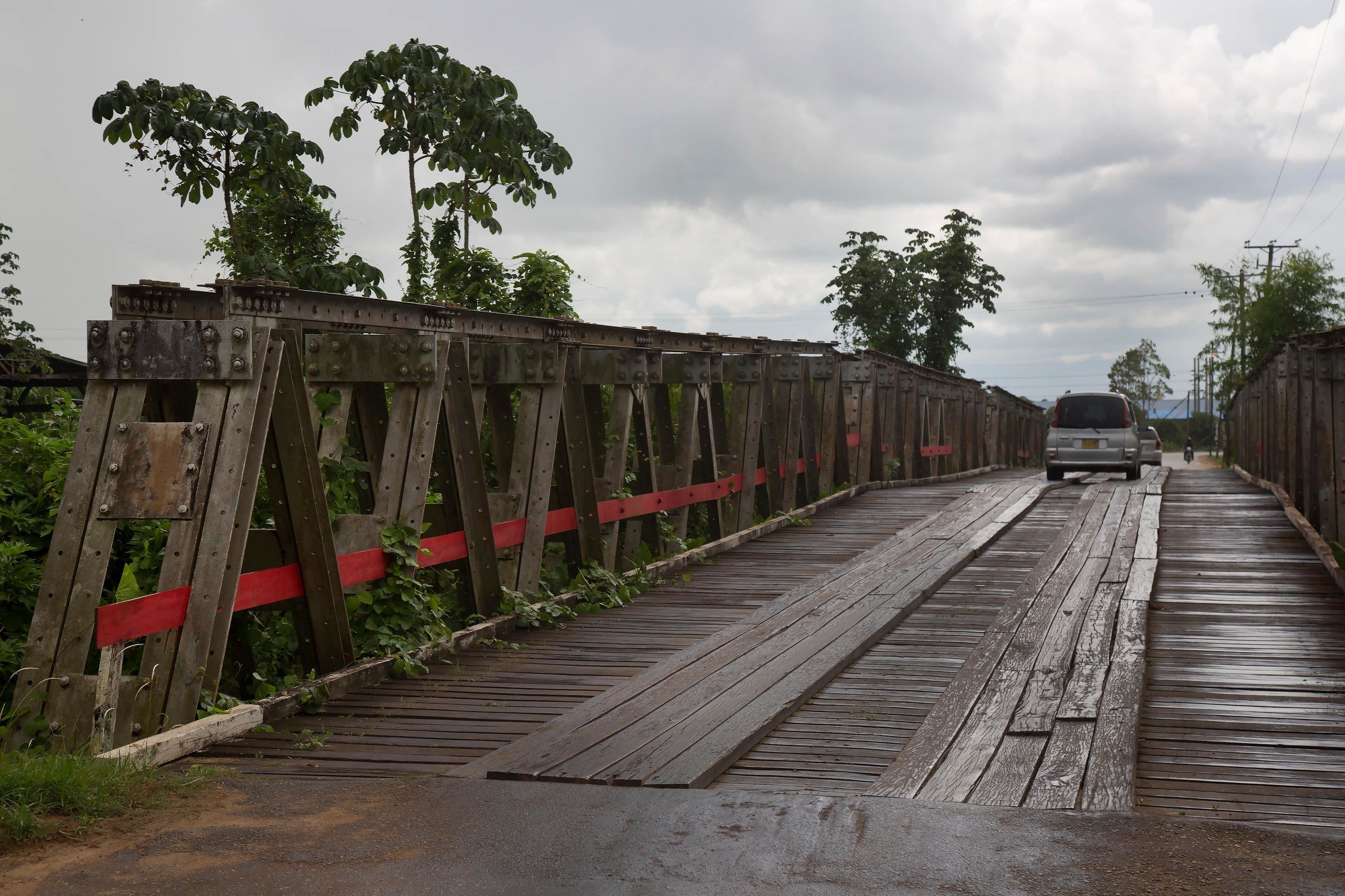
Driving in Suriname can be a pretty hair-raising experience.
The road conditions can be pretty poor, the driving standards can be low and there are many hazards to keep your eyes peeled for.
If you are so experienced at driving in countries that aren’t your own, you’ll be fine. If not, hiring a driver – or a guide who will drive you around – is a much better idea.
Suriname has a high rate of road deaths. To remind you, it’s 19.4 per 100,000, which is much higher than in many other countries around the world.
It is worth hiring a 4×4 if you want to drive yourself around Suriname and are a confident driver. There are big speed bumps in the road that can damage cars and road conditions can vary dramatically. Out of town roads are often unpaved and unreliable.
There are so many hazards on the roads that driving after dark is definitely not a good option. There’s a lack of lighting, cars parked seemingly at random, and wildlife make it dangerous.
Driving defensively is very important. Make sure to give way at intersections. Don’t assume you have the right of way as you could easily be clipped.
There is also a risk of theft from cars and carjackings, too, so ensure that you are parked securely after dark.
If you do hire a car, ensure that it is roadworthy and up to scratch safety-wise. Also, arm yourself with rental insurance.
Lastly, ensure that you have working satnav or data enough to use maps on your phone, as well as a physical map to read.
It can be an enjoyable experience, but if you are anything less than a super confident, very experienced driver, we would give it a miss, to be honest.
Is Uber safe in Suriname?
Bad news, folks: There’s no Uber in Suriname.
There is Ride, though.
Available only in Paramaribo, Ride is a ride-hailing app born and bred in Suriname that works like Uber, and allows both private drivers and registered taxi drivers to use the app.
It’s a relatively new service, so time will tell exactly how safe it is, but it seems to be popular.
One important safety tip for any ride-hailing service is ensuring that you are getting in the right car. Get into the habit of asking the driver their name and who the taxi is for, as well as making sure the make, colour and license plate match up with what you’ve got on the app.
Are taxis safe in Suriname?
Taxis are a good way to get around Suriname in general, especially if you want to get around more quickly and efficiently than by minibus (though taxis do cost more, too).
Most taxis are metered. This means you will have to take extra care to not get ripped off, ensuring that you negotiate a price with the driver before you get in. This is especially true when you arrive at the airport.
Make sure you have smaller denominations to pay with and not get ripped off by the driver having “no change” (whether they’re telling the truth or not).
To get a taxi in Paramaribo you can book a cab via the phone. One recommended company is Tourtonne Taxi (dial 1690). They have English-speaking operators and the taxis provided via this service are metered.
There are also shared taxis that run along coastal routes. These are cheaper than having your own “private” taxi, and faster than minibuses, providing a sort of middle ground between the two.
In general, it is not a good idea to hail a taxi off the street, as there is a chance it could be unlicensed. It is always better to book in advance.
Taxis, in general, are safe in Suriname, thankfully, as they provide a good way to get around when it’s too hot to walk or you want to avoid walking after dark.
Is public transportation in Suriname safe?
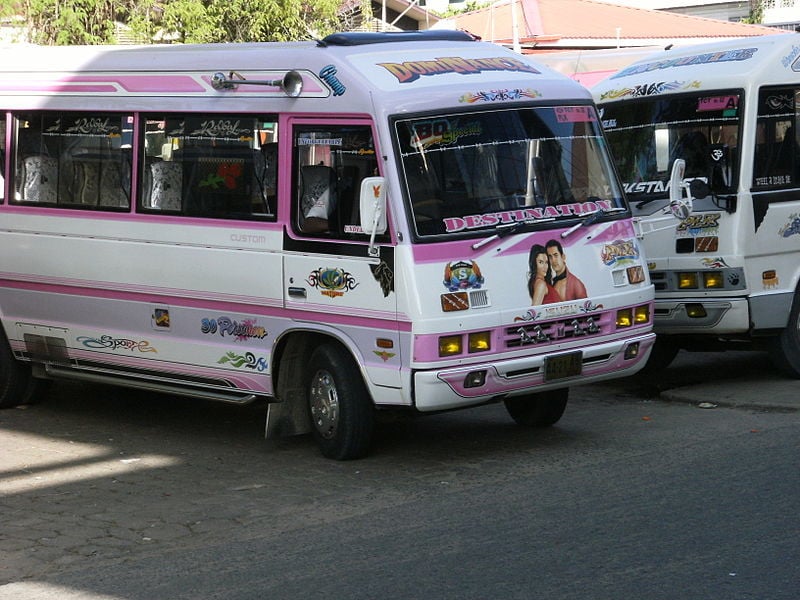
Photo: Mark Ahsmann (WikiCommons)
Public transport in Suriname is based mainly around buses, shared taxis and boats. There are also light aircraft to consider.
Buses
The bus network is plied by both government-run and private companies. It’s a pretty good way to get around, but figuring out how it all works initially can be tricky.
Most of the buses in the capital leave from Heiligenweg. It’s best to ask the staff at your accommodation for the schedule of the government buses, which will be more likely to stick to their timetables. Privately run minibus companies will leave when full.
There are also tourist buses which will come along and pick you up right from your accommodation, which makes them quite convenient, though they are much more expensive.
The government-run public buses are great if you are looking to stretch your budget a little, but they can take much longer to get to your destination. These colourful contraptions are referred to as “jumbos” by the locals but are, ironically, medium-sized. Routes through the interior are generally more expensive than those that run along the coast, too.
Regular minibuses connect much terminals and transit hubs, like airports for example.
Water taxis and boats
Water taxis and boats make up the more watery side of Suriname’s public transport and, much like the land-based transport, can come in all shapes and sizes, and varying states of disrepair.
Boats can offer a scenic, Apocalypse Now-esque route into the interior, but might not have the proper safety equipment that you would expect from such a vessel. It is highly important to choose the boat company very carefully. Do some research and ask at your accommodation for reputable companies.
You should also bear in mind that independent travel is still a pretty new and underdeveloped industry in Suriname. Boats specifically for tourists will have to be booked way in advance. Even then, some boats may only leave when full and might not be confirmed until the last minute.
Ferries and water taxis provide crossings across major rivers, such as the Suriname and the Coppename Rivers, and leave frequently.
Bicycles
Another good way to get around cities – because there are no train services – is by bicycle, owing to the Dutch heritage. Getting on a bike and pedalling around is a good way to get about. Per day rental costs are affordable but don’t expect helmets. Be aware of traffic, make sure you’re confident and you’ll find cycling a good way to get around some places.
Good cycle routes include plantations outside of Paramaribo and along the Commewijne River.
Aircrafts
Small planes shuttle people to and from Paramaribo and more remote regional and interior destinations. You should be careful with these, however, as not all airline companies are reputable and bad weather can very much adversely affect a flight.
Bluewings Airlines, for example, have been refused permission to operate in the EU as their planes do not meet international safety standards. There are also concerns for certain other airlines in the country as safety checks aren’t carried out to a good enough standard.
You really need to research airlines if you plan to use these – even more so if you are using a tour company to get around, as the airline will be already decided for you.
All in all, transports in Suriname are safe, as long as you do a bit of research beforehand.
Is the food in Suriname safe?
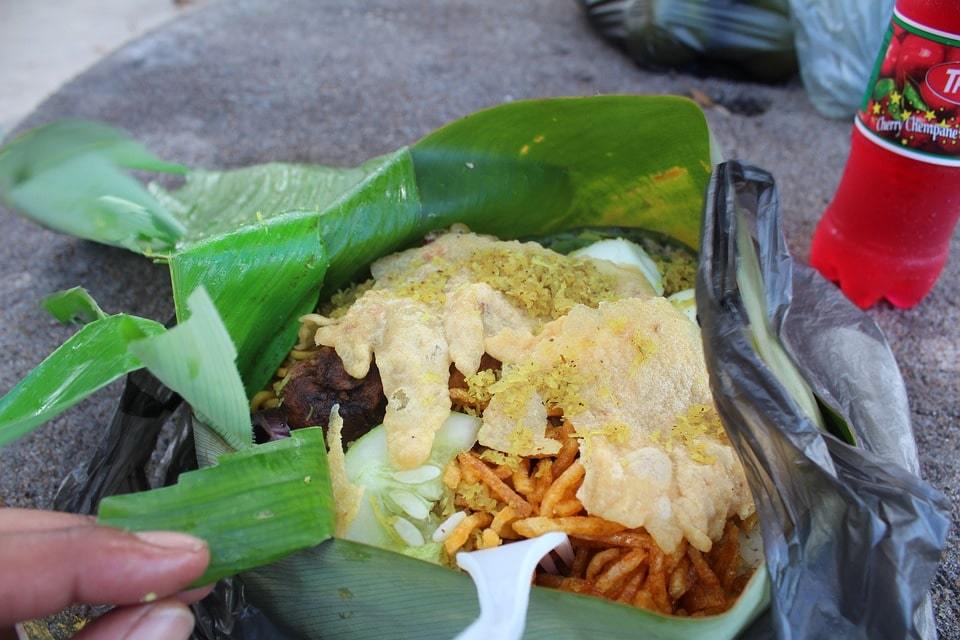
The mix of cultures in Suriname means that you will be able to tuck into a whole lot of diverse dishes from various backgrounds. You will definitely not go hungry!
From Javanese and Chinese, to Indian and European, there are many different delights to discover in Suriname’s food scene.
However, with hygiene standards probably not being what you’re used to, we’ve rounded up a few pointers to help you safely eat your way around this South American country!
- You should thoroughly wash your fruits and vegetables before you eat them. With this in mind, it is also not a good idea to purchase produce that has been peeled or cut for you. It’s impossible to ascertain how clean the conditions were when the fruit or vegetables were prepared.
- Paramaribo has the most exciting food scene. If you only have a few days in the capital before you head off somewhere else, don’t pass up on the chance to get stuck into the varied cuisines you can try here.
- Head to places that are busy with locals. Just because something is a street food stall, doesn’t mean it will be unsafe or give you a bad stomach. Just ensure that it is busy, as this will ensure a hot grill, freshly cooked ingredients and the popularity vouches for its tastiness too! In particular, you should definitely check out the Indian street food, such as roti.
- Do not be afraid of street food! If you can’t judge somewhere on its popularity, just have a look and see if it’s got some sort of hygiene standards going on (gloves, for example). If it doesn’t look all that clean to you, then move on.
- Don’t go too crazy on all the food straight away! One of the easiest ways to find yourself with an upset stomach is a drastic change in diet. Don’t go filling up too quickly on all this (albeit delicious) food that you’re not quite used to yet. Balance it out with items from your regular diet and you’ll find your feet soon enough.
- Take snacks, and your own water, on any bus journeys you may be going on. Nobody wants to arrive at a destination hangry and dehydrated.
- If you really want to get stuck into the local food scene then you should consider a guide to take you around on a local food tour. You may be able to arrange something like this with your hotel, or your tour company may offer something like this.
- Ask the staff at your accommodation for their recommendations. Chances are that any local is going to have a favourite place to go to get a specific dish or have a specific sort of cuisine, so ask them – who knows better than a local?
- If you are in a more remote area, try to avoid getting sick by only eating things that have been cooked fresh. Ensure meat has been cooked through by cutting it open before you pop it in your mouth, for example, and avoid salad where possible.
- Make sure the seafood you’re about to eat is fresh. Basically, if seafood or fish smells weird or tastes weird, then it is probably best to not run the risk of eating it.
- Consider bringing along some rehydration sachets and anti-diarrhoea medication – just in case. Nothing is worse than being holed up in your accommodation with a bad stomach and no medication to get you through it, especially if you’re in a remote area.
- Take hand sanitiser with you and keep it with you. If you can’t wash your hands, then this will be your only line of defence against harmful germs and bacteria you pick up as you travel around. Often you will find yourself eating with your hands, so ensure that they’re washed or somehow cleaned.
There is some absolutely insane, unique food on offer in Suriname. Portuguese, Dutch, Jewish, Indonesian, Indian… It’s such a unique mix of cultures that ends up in a mix of flavours that any foodie worth their salt should not be passing upon. We mean, peanut soup?!
There’s bakbhana (deep-fried plantain dipped in peanut sauce), too, just to give you an idea of how crazy things get here. As long as you choose where you eat wisely, don’t eat too much when you first arrive and wash your hands as much as possible, you’ll be fine.
Can you drink the water in Suriname?
The tap water in the capital is safe to drink, but elsewhere we would not recommend drinking the water in Suriname.
Water-borne diseases are present in Suriname, so it is also best to avoid ice cubes where you can. Take extra care with anything that has been in contact or washed with water, such as fruit and vegetables; salad, as we mentioned, is not a great idea.
However, it is not a good idea to add to the waste produced by one-use plastic water bottles. Instead, consider bringing with you a refill bottle and some water purification tablets, boiling the water (at least one minute, vigorously) or invest in a water bottle that purifies water itself.
Is Suriname safe to live?
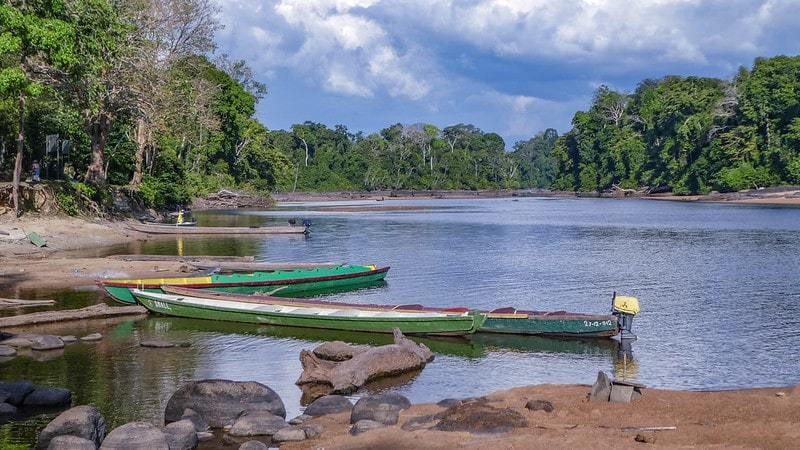
Photo: -JvL- (Flickr)
Suriname is a small, culturally diverse nation and living your life there, at least for some time, would be interesting.
With the wide-ranging cultural influences comes a selection of cuisine, languages, musical styles and communities.
A great place to base yourself would be the capital. Here’s where you’ll find job opportunities, schools, restaurants and the most multi-cultural place in the country.
There may be some language barriers you come across as Dutch is the official language and is used in official documents. Learning some Dutch is, therefore, a good idea if you plan to be in Suriname for a few months or more.
Paramaribo is surprisingly quaint for a capital city, but it’s not always charming. However there is nightlife to enjoy, it will just take some research and getting to know what life is really like here.
Living in Suriname, you will have to get used to the all-year-round hot and humid weather. With the heat comes a relaxed lifestyle. People aren’t particularly aggressive or rushed to do anything. Depending on your mindset, this pace can either be refreshing or frustrating.
When it comes to the culture of Suriname, gender roles, marriage and traditions will change depending on the ethnicity and the religion of the individual in question. I
Social class is still quite important in Surinamese life. Education is very important, to the point that higher education is actually free. This is, unfortunately, balanced out by how underfunded and undeveloped the healthcare in Suriname is.
Life in Suriname is not always easy, but the people are nice and will be the icing on the cake to living in such an interesting country.

A new country, a new contract, a new piece of plastic – booooring. Instead, buy an eSIM!
An eSIM works just like an app: you buy it, you download it, and BOOM! You’re connected the minute you land. It’s that easy.
Is your phone eSIM ready? Read about how e-Sims work or click below to see one of the top eSIM providers on the market and ditch the plastic.
Grab an eSIM!How is healthcare in Suriname?
The healthcare in Suriname isn’t exactly amazing. The medical facilities are, on the whole, very limited.
With this in mind, it is imperative that you have very good medical health insurance. Not all facilities will accept payment via an insurance company. Some will require you to make the payment and then claim on insurance yourself at a later date.
The best medical facilities in the country are in Paramaribo. There are modern hospitals available in the capital, but these still vary.
Currently, there is only one facility in the capital city that is actually open 24 hours a day: the Academisch Ziekenhuis. This hospital will provide a high level of care, with doctors that speak English, and that boasts an Accident & Emergency room, too.
If you need medical assistance while you are in Suriname, dial 115. Usually, treatment is inexpensive, but in private facilities, it can cost a lot more.
There are also well-stocked pharmacies where you can find medications. Just make sure that the medication is in date.
If you have a condition that requires medication, or if you want anti-diarrhoea medication, malaria tablets or even simple painkillers, it is best to bring it along with you (bring a letter from your doctor if it is prescribed).
Along the coast, do not expect to come across any level of good healthcare, including pharmacies. Common sense is needed to avoid injury and illness, and we would also recommend that you bring your own comprehensive first-aid kit.
Make sure you read up on or ask your doctor about the vaccinations you will need to travel safely to Suriname. Seek advice for what anti-malarial medication will be best for you, as this is prevalent too.
FAQ about Staying Safe in Suriname
Here are some quick answers to common questions about safety in Suriname.
Final thoughts on the safety of Suriname
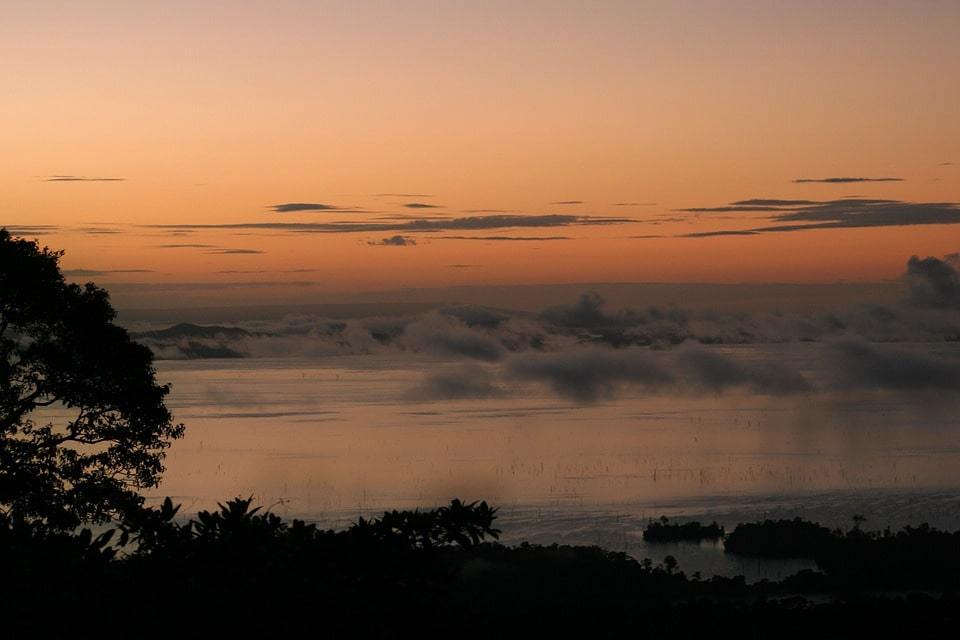
Suriname is an awesome destination! Somewhere barely heard of, but packed full with culture, cuisine and communities from all corners of the earth, Suriname will be a surprise for any traveller. The perfect off the beaten path destination, it may not have the best infrastructure, there may be a bit of petty crime, and it’s not well established, but it’s beautiful and the people are lovely. We say go!

And for transparency’s sake, please know that some of the links in our content are affiliate links. That means that if you book your accommodation, buy your gear, or sort your insurance through our link, we earn a small commission (at no extra cost to you). That said, we only link to the gear we trust and never recommend services we don’t believe are up to scratch. Again, thank you!



